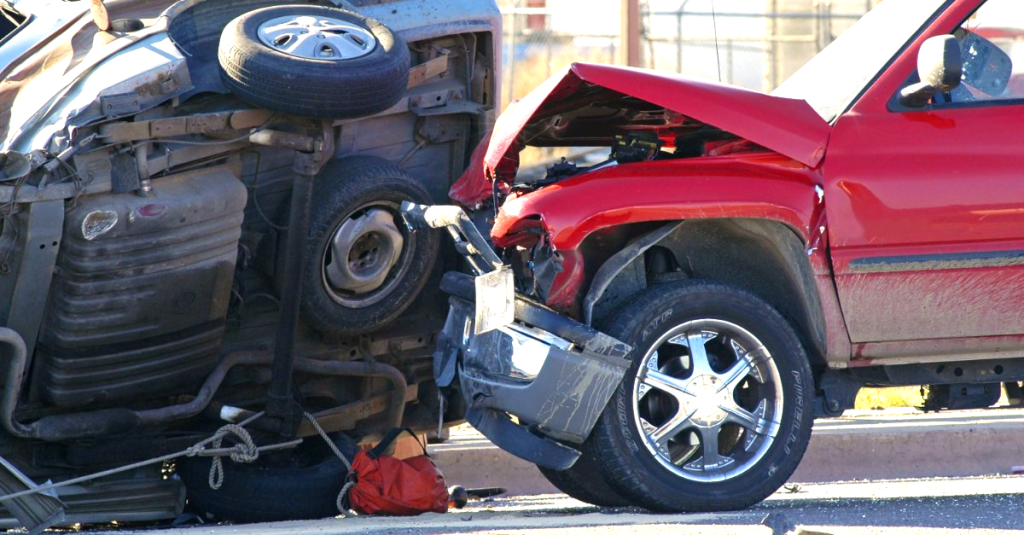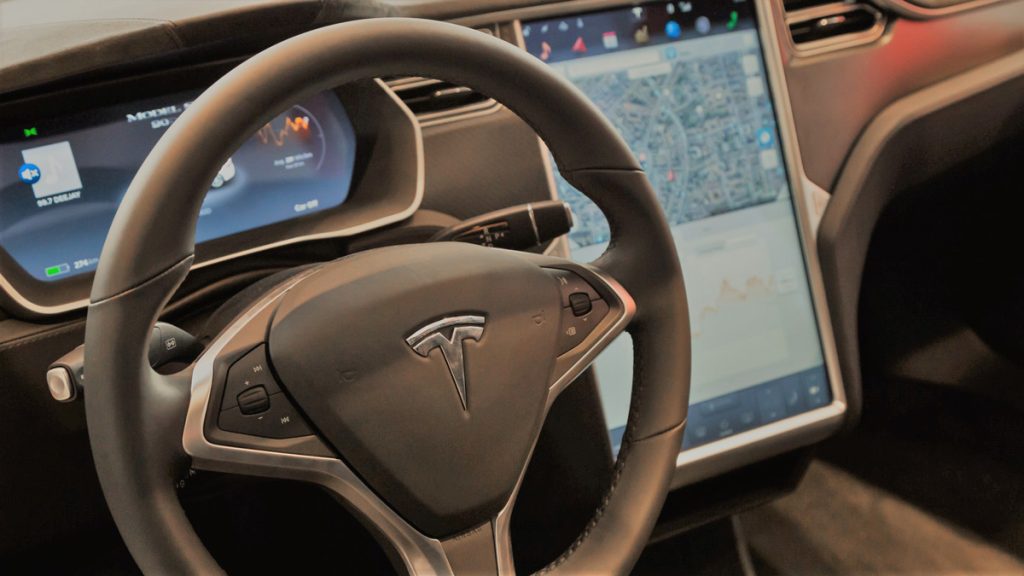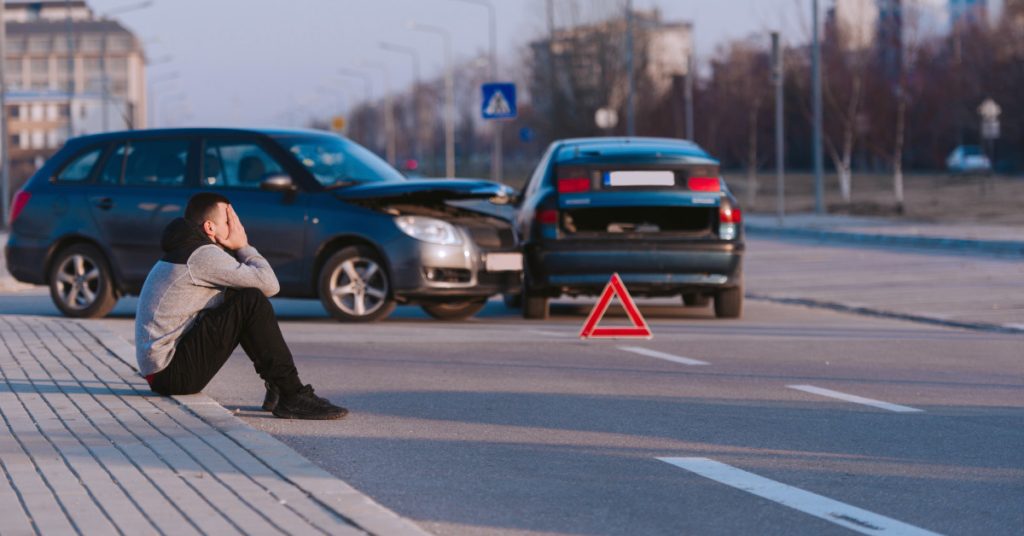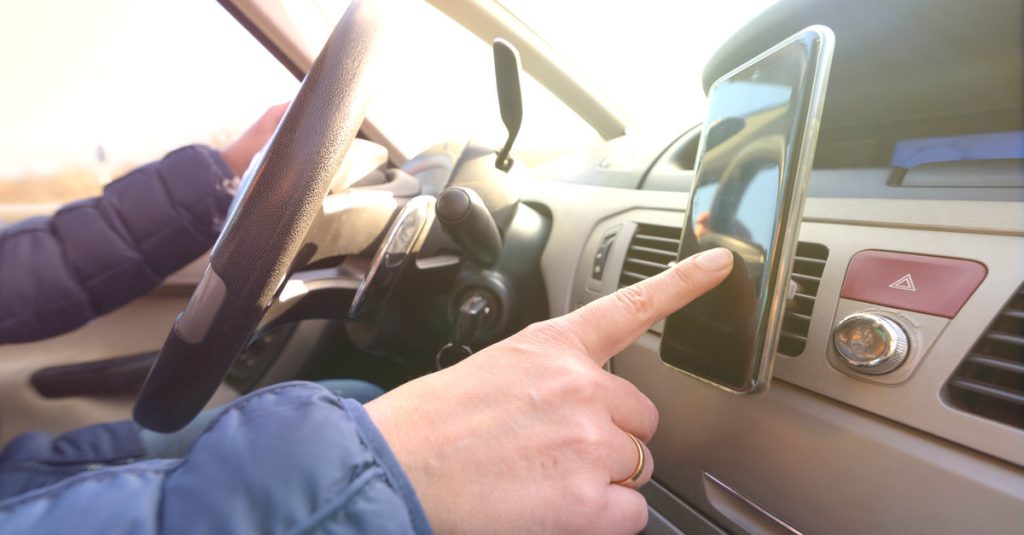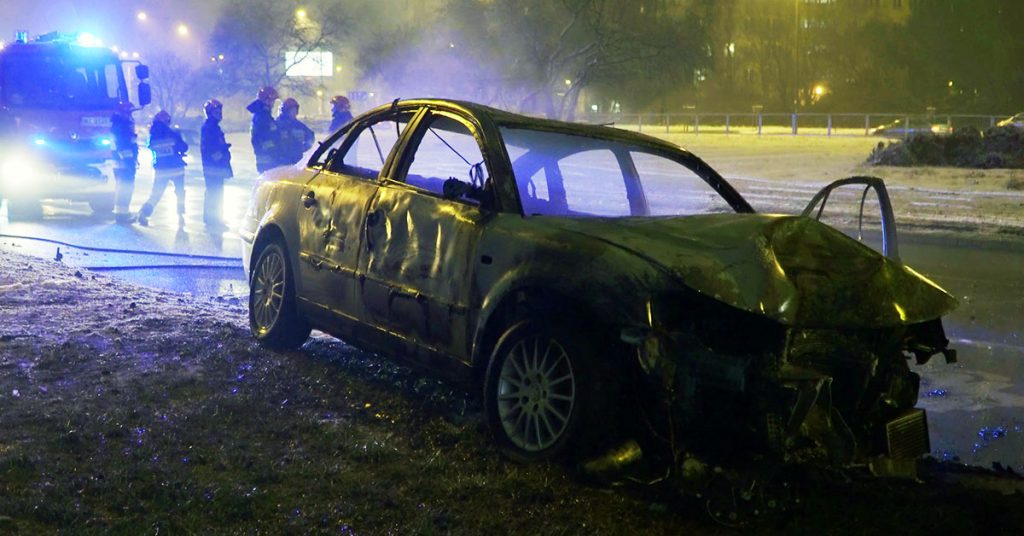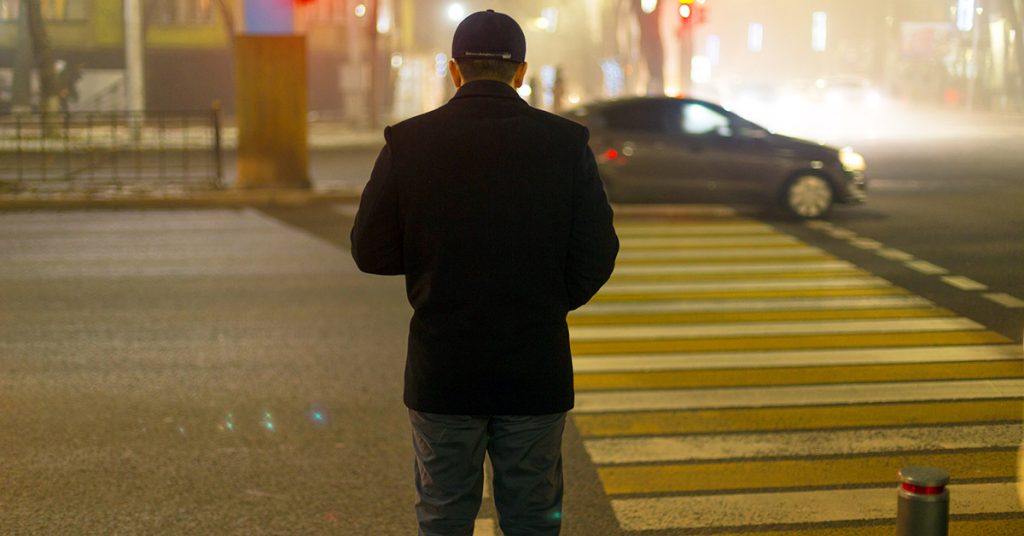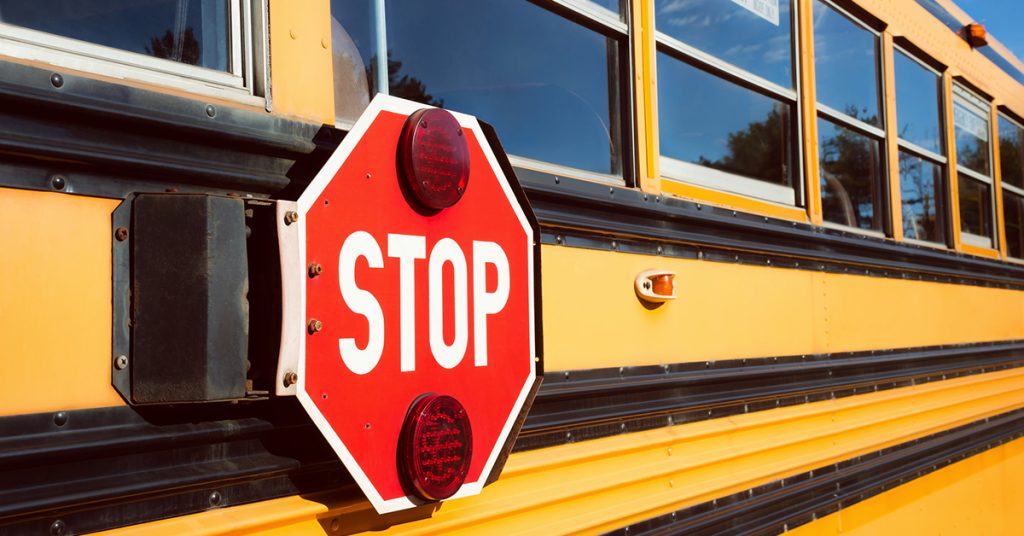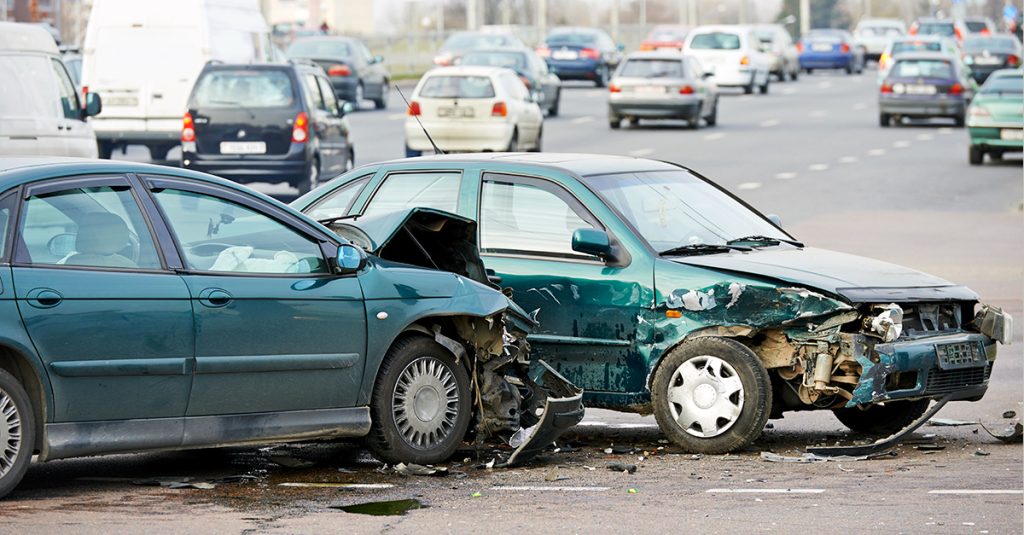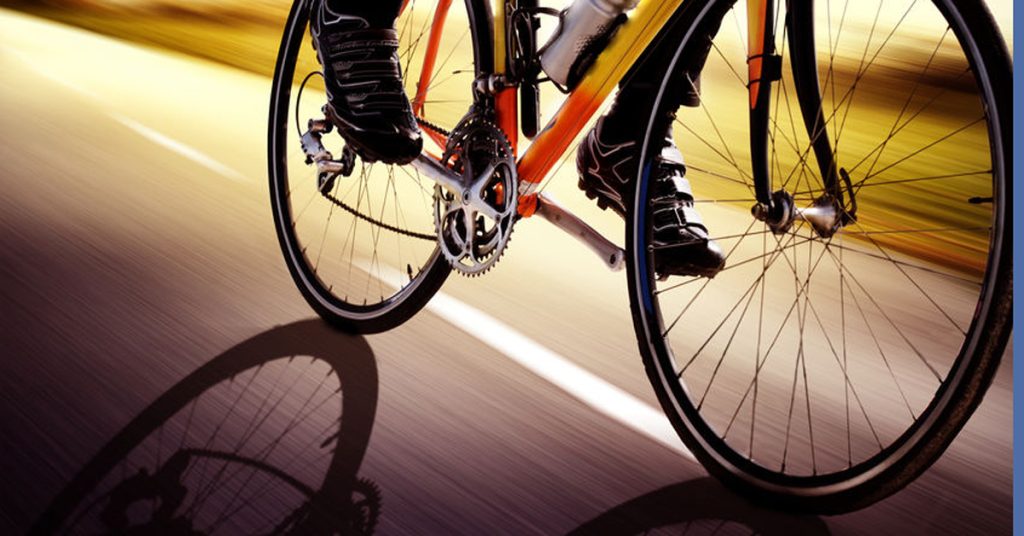Car Accidents
Look for the Massachusetts License Plate
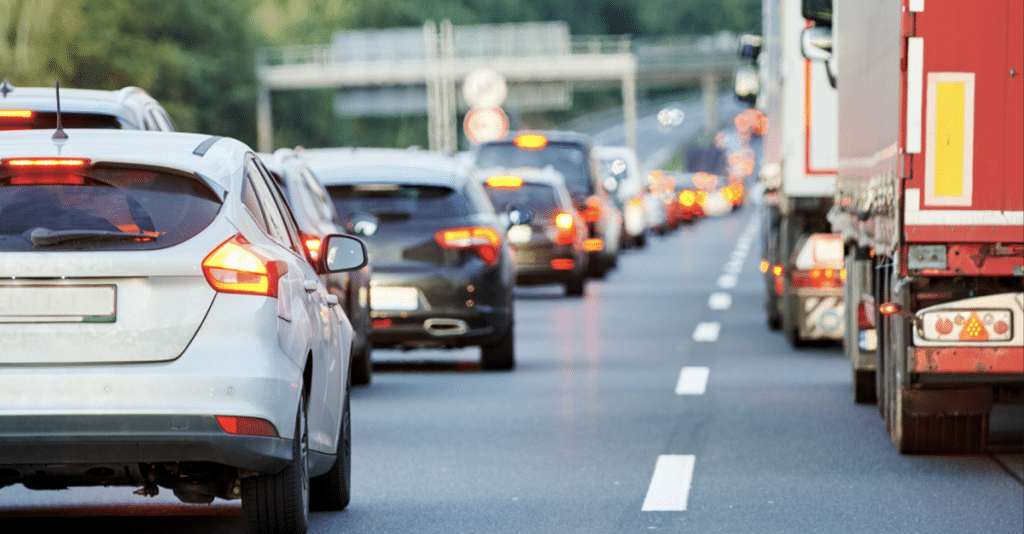
When a driver causes a crash, they have a legal responsibility to stop and provide you or the victim with their Massachusetts driver’s license, vehicle registration and license plate number.
Sadly, many drivers keep going. National figures show 24 percent of all 2021 pedestrian accidents were hit-and-run crashes. These drivers take off with the important information a victim needs to pursue a full insurance claim and compensation for their medical expenses and financial losses in recovery.
What can you do? Look for the Massachusetts license plate. In most cases, the person injured will not have a chance to look. But witnesses may be able to catch this information and make a real difference.
Research has found people who see a license plate for three or fewer seconds can remember an average of 3.5 characters. That memory quickly fades. If you witnessed a crash, the best way you can help is by:
- Writing down the license plate number.
- Taking a cell phone photo of the license plate number.
- Using your phone to make a voice note of the license plate number.
- Taking note of a partial plate number.
Breaking Down the Massachusetts License Plate
Before your next drive, take a closer look at the Massachusetts license plate so you know what to expect.
First, a bit of history: Massachusetts was the first state to issue a motor vehicle license plate back in 1903. Starting with “1,” the state issued more than 3,000 plates in the first year, according to the state library archives. Today, license plates are made at the Massachusetts Correctional Institute – MCI Cedar Junction.
Massachusetts license plates have a maximum of six characters, a combination of letters and numbers.
But your first thought about Massachusetts license plates may be the open road and, “The Spirit of America,” from the popular 1980s tourism campaign.
Not all Massachusetts license plates carry this slogan across the bottom. The state also issues passenger normal plates with a white background and green lettering, according to the Registry of Motor Vehicles Passenger Plate Manual.
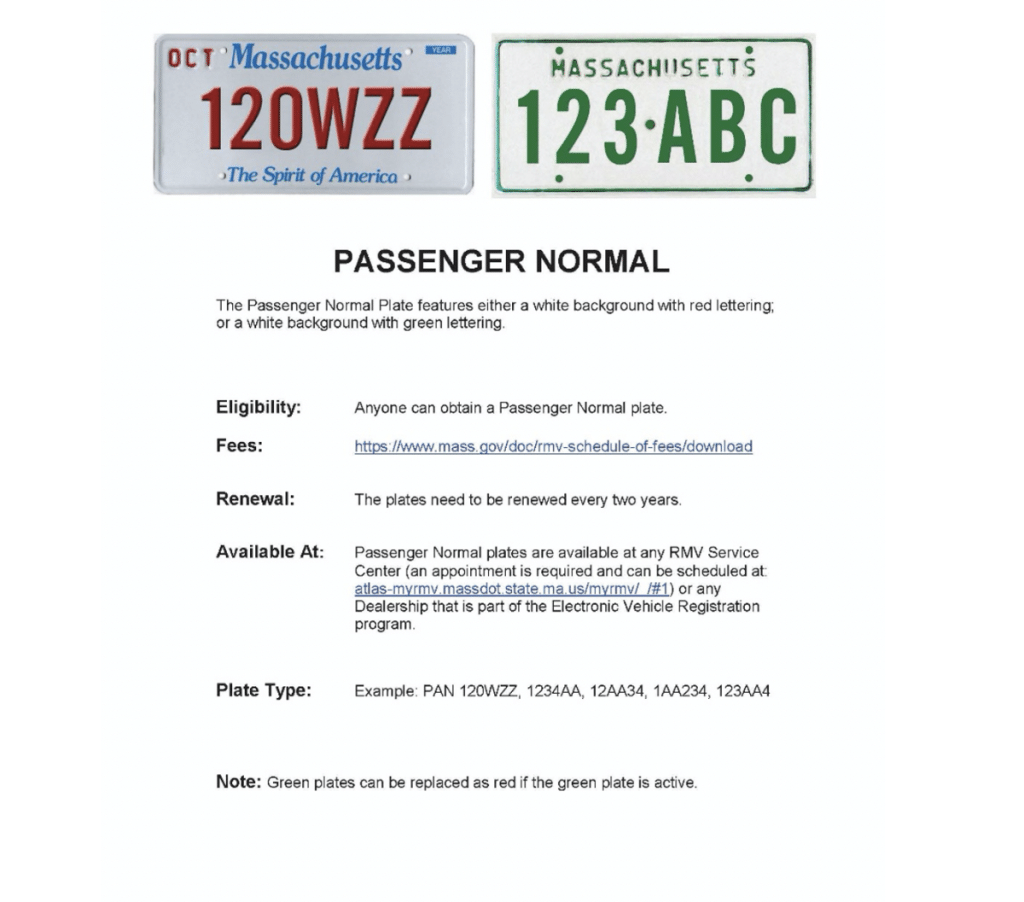
Massachusetts Passenger Plates. Source: Page 4 of the Massachusetts Registry of Motor Vehicles Passenger Plate Manual
Here are a few basics:
- All vehicles registered in Massachusetts should have a front and back license plate.
- Like street signs, license plates are designed to reflect under headlights.
- Close up, you can see license plates are marked with the year and month of registration along the top.
- You can also see the “Strand of DNA,” in this WGBH news video.
Massachusetts Vanity and Specialty Plates
A few license plates break away from the traditional in Massachusetts and may be a little easier to remember. The RMV offers vanity plates. For an extra fee, you can choose two to six characters of your choice. The state maintains discretion over appropriate combinations.
The state also offers more than three dozen specialty license plates, including the Boston Red Sox design and charity plates. Specialty plates are unique. For example, these may have two letters vertical, followed by the numbers.
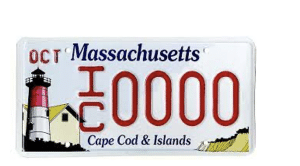
Cape Cod & Islands specialty plate. Source: Massachusetts Passenger Plate Manual.
Capturing License Plates and Car Accidents on Video
When a driver flees, a vehicle, crash and license plate may still be accessible if captured on camera. There are a number of potential sources for video. The search and negotiation for video must begin immediately after a car crash.
At Breakstone, White & Gluck, our car accident attorneys have extensive experience in the area of video evidence. We are committed to locating video early to provide our clients with the most favorable position in negotiations with insurers.
From Our Experience: Negotiating for Video Evidence for One Client
One of our attorneys represented the family of a woman who was struck and killed in a pedestrian accident near a supermarket in the Boston area.
This was a devastating experience, one that became more painful as our attorney investigated. There were no witnesses in the early morning car accident, except for the driver, who remained on the scene, but was not forthcoming with police officers about the details of what happened.
Our attorney learned the supermarket’s security team was in possession of video surveillance, which was good news.
However, the security team was reluctant to release the video. Our attorney worked with a commitment to preserve and recover the video evidence for the victim’s family. When he did, the video proved to be powerful evidence that showed the driver’s negligence.
Read more about this pedestrian accident case on our website.
Free Legal Consultation – Boston Car Accident Lawyers
With more than 100 years combined experience, Breakstone, White & Gluck is known for our results for victims of car crashes and pedestrian accidents in Massachusetts. For a free legal consultation with one of our partners, contact Breakstone, White & Gluck at 800-379-1244 or 617-723-7676 or reach out using our contact form.
New Safety Campaign Encourages Drivers to Stop Deadly Trend of High-Speed Accidents
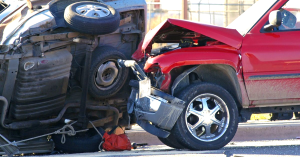
Speed-related crashes claimed 17 more percent more lives during 2020, according to the NHTSA.
Many of us have resumed our routines or transitioned to a new normal after the pandemic. Except in our cars. Early in the pandemic, drivers began a dangerous trend of driving less and speeding more into open roads, resulting in very serious crashes and injuries.
This past summer, the National Highway Traffic Safety Administration (NHTSA) announced a new public outreach campaign to address the growing danger of speed-related accidents.
In this blog, we share a few statistics from the NHTSA’s “Speeding Wrecks Lives” campaign to encourage awareness about the consequences of speeding here in Massachusetts.
The impact of speeding during the pandemic:
- More than 11,000 people were killed by speeding crashes in 2020, a 17 percent increase from 2019.
- Overall, speeding caused 29 percent of all traffic deaths in 2020.
- Younger drivers age 18-44 were behind the wheel in 25 percent of fatal speed-related crashes.
- Younger male drivers between the ages of 15 and 24 were involved in many of these crashes.
Another critical benchmark involves young children. The Governors Highway Safety Association reports speed-related deaths of pedestrians younger than 15 more than doubled between 2018 and 2020.
In June, the State House News Service reported that Massachusetts reached an 11-year high in traffic deaths during 2021. In the article, a Massachusetts DOT board member specifically mentioned the impact of speeding as well as aggressive driving since the pandemic began.
Fatal Pedestrian Crashes Are More Likely At Higher Speeds
The Federal Highway Administration has long stressed the importance of managing speeds on the roads, citing data from the AAA Foundation for Traffic Safety. The data shows pedestrians have a much higher chance of survival when hit in car crashes at lower speeds.
When a pedestrian is hit by a car traveling 23 mph, they have a 10 percent chance of death, compared to a 50 percent chance of death when a car is traveling 42 mph. Pedestrians are 90 percent more likely to die when hit by a car traveling 58 mph.
Why Speeding is So Dangerous
With this new campaign, the NHTSA continues to educate the public on the specific hazards of high-speed accidents.
Drivers who speed are more likely to lose control of their steering. Even when the driver sees a pedestrian or identifies a potential traffic hazard, they may not have time to stop or change lanes in time if they are speeding. Drivers have more control when they travel at lower speeds and really take time to look for pedestrians and cyclists. When a driver looks, this naturally slows them down and raises their awareness of road conditions. With more pedestrians and cyclists out than ever, drivers should really look, whether they are traveling through downtown areas, school zones or quiet back roads.
When drivers disregard the speed limit, they may also let their guard down in other ways. Speeding can be a springboard for drivers to engage in aggressive driving and road rage.
Free Legal Consultation – Boston Auto Accident Lawyers
With more than 125 years combined experience, Breakstone, White & Gluck has extensive experience representing those injured in car accidents, pedestrian crashes and bicycle collisions in Massachusetts. We provide experienced and aggressive representation throughout all stages of motor vehicle accident claims, from investigation to trial and appeal if necessary.
If you have been injured by negligent driving, contact our lawyers for a free legal consultation at 800-379-1244 or 617-723-7676 or use our contact form.
Tesla Has Highest Number of Crashes Involving Self-Driving Cars, Driver-Assist Systems, New Data Shows
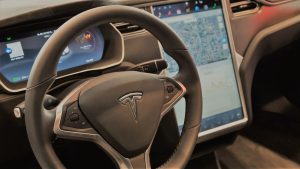
New data shows self-driving cars and driver-assisted systems were involved in hundreds of car accidents over a 10-month period. Tesla vehicles were tied to 70 percent of these car crashes.
Days after expanding its Tesla safety investigation, the federal government has released 10 months of data showing nearly 400 crashes involving self-driving and driver-assisted vehicles, according to The New York Times. Tesla vehicles were involved in 70 percent of the self-driving and driver-assisted crashes.
Of 392 crashes, 273 involved Tesla vehicles operating with Autopilot, Full Self Driving or related features, according to the National Highway Traffic Safety Administration (NHTSA). Six people were killed while others were injured. The crashes ranged from serious collisions to fender benders or smaller incidents.
- Honda vehicles were involved in 90 incidents.
- Waymo, a driverless taxi service in Arizona, was involved in 62 crashes. The service is owned by Google’s parent company.
- The G.M. Cruise taxi service was linked to 23 accidents in the San Francisco area.
- Subaru reported 10 crashes; Ford, G.M., BMW, Volkswagen, Toyota and Porsche each reported 5 or fewer.
Last year, the NHTSA issued an order requiring automakers to report car accidents involving vehicles with driver-assist systems or fully-automated vehicles being tested on public roads. This is the first data release under the order and an NHTSA official cautioned the public not to make conclusions yet.
The data covers just 10 months, but provides no context on the total number of vehicles each manufacturer has on the road with automated technologies.
Tesla has about 830,000 vehicles with driver-assisted technologies on the road, according to The New York Times. But other companies, such as Ford and GM, also have technologies that allow hands-free driving in certain situations. They have sold fewer models.
In addition, automakers have long sold cars, trucks and SUVs with some level of driver-assist systems, such as cruise control or automatic braking when traffic ahead slows. With this data release, the NHTSA said it plans to keep collecting data on auto crashes involving these features and technologies, as a guide for future safety requirements.
NHTSA Expands Investigation of Tesla Autopilot Feature
The data comes as the NHTSA investigates years of car crash reports involving Tesla’s Autopilot feature. On June 9, the agency announced it was expanding the probe to include all four Tesla cars – Model S, Model X, Model 3 and Model Y – from 2014 and 2021, according to The New York Times.
The agency said it was upgrading its preliminary evaluation to an engineering analysis, a step required before a safety recall, according to The New York Times. The NHTSA has set a one-year timetable for the review.
The Texas-based company designs the world’s most popular luxury vehicles, many of which use the Autopilot technology to perform key aspects of driving, such as steering, accelerating and braking automatically within the lane. The NHTSA is investigating whether the Autopilot fails to prevent drivers from diverting their attention from the road and engaging in other unsafe behaviors.
This wouldn’t be the first Tesla recall. In November 2021, Tesla recalled almost 12,000 vehicles from its Full Self Driving beta test. This was a version of Autopilot designed for city driving. The company reported a software update could unexpectedly activate a vehicle’s emergency brakes.
Tesla Self-Driving Crash and Sleeping Driver Report in Massachusetts
Tesla crashes have made headlines across the country.
There was a bizarre story on the sleeping driver traveling in a Tesla vehicle on the MassPike back in 2019. A driver captured video of another driver and his passenger traveling in a Tesla vehicle in the next lane. Both were in a heavy sleep.
State Police called the behavior “extremely dangerous” and said the driver would be subject to criminal charges if they ever identified and located him. That never happened.
But State Police caught the driver in a Tesla self-driving crash in West Bridgewater in 2020.
According to news reports, a state trooper pulled over a college student in an SUV on Route 24 in West Bridgewater. A Tesla driver slammed into the trooper’s cruiser, then hit the 21-year-old’s vehicle as she reached for her registration. The driver was reportedly operating in Tesla’s Autopilot mode, according to a NBC Boston report. He was charged with negligent operation.
Free Legal Consultation – Boston Car Accident Lawyers
Breakstone, White & Gluck has over 125 years of combined experience successfully obtaining record recoveries for clients injured by negligent driving. Our attorneys are experienced in handling cases involving car accidents and commercial truck crashes across Massachusetts. We represent clients at all stages of motor vehicle accident cases, from insurance claims through to trial and appeal, if necessary.
For a free legal consultation, call 800-379-1244 or 617-723-7676 or use our contact form.
U.S. Traffic Deaths Reached a 16-Year High in 2021, Early Estimates Show
 Traffic fatalities rose dramatically last year as we worked to emerge from COVID-19. The National Highway Traffic Safety Administration (NHTSA) has released early estimates showing 42,915 people died in motor vehicle crashes in 2021, up 10.5 percent from 2020. In Massachusetts, early estimates show a 20 percent increase.
Traffic fatalities rose dramatically last year as we worked to emerge from COVID-19. The National Highway Traffic Safety Administration (NHTSA) has released early estimates showing 42,915 people died in motor vehicle crashes in 2021, up 10.5 percent from 2020. In Massachusetts, early estimates show a 20 percent increase.
There were more vehicles on the road last year. The NHTSA reported an 11 percent increase in vehicle miles traveled in 2021 compared to 2020. There was only a slight decline in the fatality rate per mile traveled.
But the projection shows the highest number of traffic fatalities since 2005 – and the largest annual increase in traffic deaths since 1975, when the federal traffic data system began. Across the board, drivers, pedestrians, bicyclists and motorcyclists all faced more treacherous conditions than before the pandemic, even as many traveled less.
Rise in Pedestrian and Bicycle Fatalities
Many of us have been walking more since the pandemic began. It’s nice to just step outside and start getting some exercise. However, the walk can be very dangerous. Traffic may look lighter at times. Open roads seem to encourage drivers to speed and traffic patterns are still highly irregular.
Nationwide, pedestrian traffic deaths increased 13 percent in 2021, while fatal bicycle accidents climbed 5 percent. There was also a 9 percent increase in motorcycle accident fatalities.
Speed-Related Crashes Up 5 Percent
The NHTSA reports a 5 percent rise in traffic fatalities caused by speed-related crashes in 2021. This follows a dangerous 17 percent jump from 2019 to 2020. Overall, speeding is responsible for more fatal crashes now than before the pandemic.
There were also more fatalities in multi-vehicle crashes last year, as vehicles traveled more miles. These fatalities climbed 16 percent in 2021. There was a rise from March to August 2021, then November to December. April 2021 saw the greatest increase in fatalities in multi-vehicle crashes.
Alcohol-Related Crashes Rise
One of the most troubling trends of the pandemic was the rise in drunk driving and injuries. In 2020, there was a 16 percent rise in traffic fatalities stemming from police-reported, alcohol-involvement crashes. This came as workers and students stayed home. In 2021, this trend continued, with an estimated 5 percent increase in these crashes.
More Traffic Deaths Among Seniors
There were fewer traffic fatalities among older Americans in 2020 as more people stayed home or suffered from COVID-19. But last year, as senior citizens (those 65 and older) got back out, there was a 14 percent increase among traffic fatalities.
13 Percent Increase in Traffic Fatalities Involving at Least One Large Truck
In 2021, there was a 13 percent increase in fatalities in crashes involving at least one large truck (one with a gross vehicle weight rating of more than 10,000 lbs). The NHTSA counts both commercial and non-commercial vehicles.
Trucking activity has drastically changed since the start of the pandemic. More of us are ordering groceries, clothing and household supplies from the convenience of our homes and we may see large trucks and delivery vans several times a day.
The NHTSA reports traffic fatalities in crashes involving at least one large truck increased from April to July 2021 and then again from November to December 2021.
Free Legal Consultation – Boston Car Accident Lawyers
Founded in 1992, Breakstone, White & Gluck has been consistently recognized for our results for our clients. Our personal injury attorneys provide experienced and aggressive representation to those injured in car accidents, pedestrian accidents and motorcycle crashes across Massachusetts.
If you or a loved one have been injured by another driver’s negligence, learn your legal rights for seeking compensation for your recovery. For a free legal consultation, contact Breakstone, White & Gluck and at 800-379-1244 or 617-723-7676 or use our contact form.
Proposal to Strengthen Massachusetts Hands-Free Driving Law By Adding Ban on Recording and Broadcasting While Driving
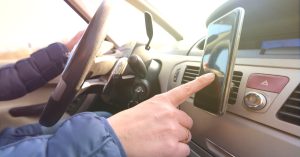
Drivers are not allowed to pick up cell phones under the Massachusetts hands-free driving law, but can quickly tap the device for activation of hands-free mode or GPS.
A dangerous trend has emerged on our roads, cell phones and social media accounts, with the rise of drivers “vlogging,” live-streaming and making video phone calls. In a 2020 survey, more than 20 percent of drivers admitted to recording video on cell phones. This is more than double the response from 2015.
Now, after a cyclist’s tragic death, a local lawmaker is proposing Massachusetts update its hands-free driving law to ban both recording and broadcasting video while driving.
Nationwide, 48 states have banned texting while driving and 24 states have passed hands-free driving laws, according to the Governors Highway Safety Association.
Massachusetts would join four other states which have banned recording and broadcasting as part of their hands-free laws, according to state Sen. Jo Comerford, D-Northampton, who has proposed the legislation.
Sen. Comerford proposed “Charlie’s Law” in the wake of a cyclist’s death near Northampton High School in October 2021. A 23-year-old driver is accused of video chatting on the FaceTime app, then running past a stop sign and striking the cyclist in a fatal bike crash, according to local news reports. The driver now faces criminal charges, including negligent motor vehicle homicide. Meanwhile, state lawmakers held the first hearing on Charlie’s Law earlier this month.
Background on Massachusetts Distracted Driving Laws
Looking to prevent injuries and deaths in car accidents, Massachusetts passed a ban on texting while driving in 2010. After many years of debate, lawmakers reached agreement on a more comprehensive hands-free driving law in 2019.
The Massachusetts hands-free driving law took effect in early 2020 and drivers now face fines for violations, starting with $100 for the first offense.
For third and subsequent offenses, drivers face up to $500 in fines and an insurance surcharge. They must also attend a distracted driving education program.
Under the hands-free law, drivers are only allowed to touch mobile phones and electronic devices to quickly activate hands-free mode, when devices are mounted to a windshield, dashboard or center console. Drivers are still allowed to use voice-to-text commands and make phone calls so long as cell phones are properly mounted.
As it stands, the Massachusetts hands-free driving law does not specifically ban drivers from making video conference calls or vlogging activities, such as recording or live broadcasting video of one’s self while driving to post on social media sites. As long as cell phones are mounted, drivers are not violating the law.
Drivers may be cited or charged if police investigate a car crash and find they violated another traffic law, such as a marked lanes violation. But updating the hands-free law – which is a primary enforcement law – may allow police to stop and cite drivers they see using cell phone video features before a crash happens.
Sen. Comerford has proposed S. 2733, “An Act Prohibiting Video Recording or Broadcasting While Driving.” The bill proposes adding language to the existing law stating no operator shall record or broadcast video of themselves on a mobile device, with a few exceptions.
- Drivers would still be allowed to record or broadcast video in an “emergency or exigent circumstance” or “when it is so clearly in the public interest as to override the public safety purpose of this sentence.”
- Dash cams can still be used to record traffic conditions or passengers in a vehicle, but they must be mounted. This allows commercial drivers, Uber and Lyft drivers to continue recording passenger behavior.
More Than Twice As Many Drivers Admitted to Recording While Driving in 2020
In its 2021 Driving While Distracted study, State Farm Auto Insurance reported 22 percent of drivers admitted to recording behind the wheel in 2020, compared to 10 percent in 2015.
Younger drivers were more likely to engage in this behavior:
- Nearly half – 44 percent – of drivers in the 18 to 29-year-old demographic admitted to recording video while driving.
- More than a third of drivers age 30 to 39 admitted the same.
This was not the only increase. State Farm reported 89 percent of drivers – or nearly 9 out of 10 – admitted to engaging in one of the 14 distracted driving behaviors covered in its online survey.
One troubling note was most drivers in states which had passed hands-free driving said they were aware of laws, but one in five were not informed. Six percent of the drivers even said their state did not ban handheld cell phone use.
Contact Breakstone, White & Gluck For a Free Legal Consultation – Boston Personal Injury and Car Accident Attorneys
At Breakstone, White & Gluck, our Boston personal injury lawyers offer more than 100 years combined experience representing those injured by negligent and reckless driving. Our attorneys work with clients throughout the Boston area, including those who live and work in Boston, Cambridge, Somerville, Everett, Brookline, Arlington and Quincy.
If you have been injured in a car accident caused by another driver’s negligence, you may require medical care and have to miss time at work. You may have many questions. For a free legal consultation, contact Breakstone, White & Gluck at 800-379-1244 or use our contact form. Our attorneys will review the facts of your case with you and help you determine whether you have a potential claim.
New Cars May Get Technology to Help Detect and Reduce Drunk Driving
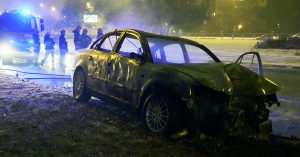
Automakers may soon have to build cars with technology to work toward stopping drunk driving crashes.
The $1 trillion infrastructure bill is being called the most important legislation in more than 40 years in the work to stop drunk driving accidents, injuries and deaths.
After a long pandemic, the infrastructure bills calls for expansive funding across all areas of transportation, including airports, public transit, roads, bridges, bike lanes and pedestrian improvements.
The infrastructure bill also includes new safety mandates for automakers, including that new cars be built with technology to detect and reduce drunk driving and for rear-seat reminders to alert parents that a child has been left behind.
The U.S. House of Representatives passed the federal Infrastructure Investment and Jobs Act on Friday, sending the legislation to President Joe Biden’s desk. The U.S. Senate had already approved the bill in August.
“Single Most Important” Legislation to Stop Drunk Driving Accidents
Mothers Against Drunk Drivers called the infrastructure bill the “single most important legislation” in its 41-year history of working to stop drunk driving tragedies.
Drunk driving kills about 10,000 people each year on U.S. roads, according to the National Highway Transportation Safety Administration. This accounts for roughly 30 percent of all traffic fatalities.
The infrastructure bill calls for all new cars to comply with an advanced drunk and impaired driving prevention technology standard. The legislation does not specify what the technology will be.
If the president signs the bill, the NHTSA will be charged with finalizing rules for implementing a technology within three years. Automakers will have an additional two years to incorporate the changes into the production.
Mothers Against Drunk Driving has long advocated that states make breathalyzers mandatory sentencing for those who have been convicted of drunk driving.
The Washington Post interviewed a few experts who said to expect more passive technologies than a breathalyzer.
Potential technologies could work around breath or blood sensors, or cameras.
The NHTSA has worked with the Automotive Coalition for Traffic Safety (ACTS) for more than 10 years to develop technologies that discretely detect alcohol on drivers’ breath.
Drunk Driving Accidents and Injuries in Massachusetts
In Massachusetts, drivers who operated under the influence of alcohol killed 120 people in 2018 (Source: MADD). As with the federal numbers, this represents about a third of all traffic fatalities across the state that year.
Drunk driving accidents are preventable if drivers remember their responsibilities. Massachusetts drivers have a responsibility to use reasonable care on the roads. Operating under the influence is both against the law and negligent if you cause a crash resulting in injury.
Drivers also have a responsibility not to operate while impaired by drugs, including marijuana, which was legalized in Massachusetts in 2016.
Free Legal Consultation – Boston Car Accident Lawyers
Founded in 1992, Breakstone, White & Gluck is a top-rated Boston law firm that specializes in representing clients in personal injury and car accident cases. We have expertise in representing victims and families of drunk driving accidents in claims against drivers and in Massachusetts liquor liability claims involving third parties.
Our firm stands out for our experience. Each of our partners offers more than 30 years of experience representing clients in Boston and across Massachusetts.
For a free legal consultation, contact Breakstone, White & Gluck at 800-379-1244 or 617-723-7676 or use our contact form.
As the Days Get Shorter, Make Pedestrian Safety a Priority in Massachusetts
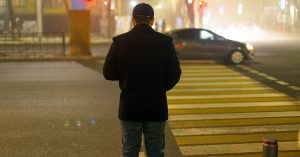
As the days get shorter, drivers must watch for pedestrians. The number of pedestrian fatalities has risen in Massachusetts during 2021.
The majority of all pedestrian fatalities occur at night or in dark light conditions, according to the National Highway Traffic Safety Administration (NHTSA). This is a significant point come October in Massachusetts, when the days get shorter and the walk home becomes darker.
As a driver, renew your commitment to travel safely near pedestrians this Fall. This is critical. In addition to shorter days, Massachusetts is seeing a rise in pedestrian fatalities as traffic volumes start to rebound. In August, the Massachusetts Department of Transportation (MassDOT) reported traffic volumes had returned to just 5 percent below pre-pandemic levels in 2019.
As of October 21, 2021, 58 pedestrians have died on Massachusetts roads this year, according to MassDOT crash data. 55 pedestrian fatalities were recorded in 2020, when traffic was lightest due to Covid 19 stay at home policies. Prior to the pandemic, there were 78 fatal pedestrian injuries statewide in 2019.
There have been 1,086 total pedestrian accidents reported in 2021 so far, including those involving fatal injuries, non-fatal injuries and property damage without injury, compared to 1,443 pedestrian crashes in 2020 and 2,198 pre-pandemic in 2019. (Source: MassDOT, 2017-2021 Pedestrian, Cyclist and Motorcyclist Crashes by Injury).
While helpful, the data is just a snapshot. A better resource: ask anyone who walks if driving patterns are still irregular due to the pandemic. Roads may be less congested, but drivers are picking up speeds at times. This endangers pedestrians, especially at night, when there is less visibility.
Reminders for Driving Safely Near Pedestrians and Reducing the Risk of Injury
Drive Slowly and Watch for Pedestrians
Drive slowly and always look for pedestrians. Take an extra moment to look in all directions before you step on the gas. Pedestrians are more likely to blend in at night, even in well-lit areas.
Yield and Stop at Crosswalks
Drivers have a responsibility to yield to pedestrians before turning at traffic signals and to stop or yield for pedestrians to safely walk through crosswalks. Many pedestrian accidents at night occur in intersections and crosswalks.
Once you start moving, you can attempt to break quickly but you really have less control, especially in short distance situations, such as when turning at an intersection or backing out of a parking space. Take a moment and take a good look for pedestrians first.
Give Yourself More Time When Getting in Your Car
Drivers can reduce their risk of hitting a pedestrian by giving their full attention to the road. To do this, give yourself time to get ready for the ride while you are parked: buckle your child up and set up your cell phone in hands-free mode if you plan to use it. Make sure you have directions typed into your GPS or you know where you are going.
When you are finished, then give yourself time to turn on the vehicle and look for pedestrians.
Drive at Night Without Distractions
The state of Massachusetts now allows drivers to use cell phones in hands-free mode, but this can be a dangerous distraction when driving at night. The best policy is to pull over in a legal parking space if you need to call someone and avoid causing a car accident or truck crash, resulting in pedestrian injuries.
Reduce Your Speed
During the day and at night, you give yourself more time to stop for pedestrians when you travel at the speed limit or below if necessary for safety conditions.
Look for Both Pedestrians and Cyclists
Pedestrians may or may not wear bright clothing, so you have to really check when you drive at night or in the early morning. Pedestrians may be hard to see, even when traveling through a well-lit intersection or parking lot.
Cyclists may be easier to see as they approach. In Massachusetts, cyclists must use a white headlight and red taillight or rear reflector at night, or specifically from ½ hour after sunset until ½ hour before sunrise under M.G.L. c. 85, § 11B.
This means you may see a white light when a cyclist is approaching and red light (or reflector) from behind. You may also see reflective material on a cyclist’s pedals.
Consider the Impact of Darkness on Drivers
It is simply harder to see at night. Not just for senior citizens. Age-related vision changes can pay a toll much earlier than retirement age. For instance, a 50-year-old driver may need twice as much light to see as well as a 30-year-old, according to the National Safety Council. It is critical for all drivers to schedule an annual eye exam, get proper rest and set aside distractions.
Older Drivers
Still, older drivers may struggle the most when driving at night. At 60 or older, drivers may not see as well at night and may suffer from a loss in color and depth perception, making it harder to judge speeds and distances, according to the American Optometric Association.
Safety precautions for older drivers traveling at night:
- Have an annual eye examination.
- Consider taking a driving class to brush up on your driving skills and learn about age-related vision changes. The AARP offers courses and other organizations may also.
- Limit or avoid driving at night.
- Reduce your speed and expect pedestrians.
- Be cautious at intersections, taking extra care to yield to pedestrians.
Limit Teen Driving at Night
As a parent, let your teen drive during the day, but consider limiting their driving hours at night this Fall. Teens are still learning and driving safely at night takes practice. And right now, traffic is even less predictable and your teens may be driving alongside more trucks and delivery vans as we approach the holidays.
This is a suggestion. But remember under the Massachusetts Junior Operator Law, teens are not permitted to drive at all between 12 a.m. and 5 a.m.
Free Legal Consultation – Boston Pedestrian Accident Attorneys
Breakstone, White & Gluck is a top-rated Boston personal injury law firm. With more than 100 years combined experience, our attorneys provide thorough and aggressive representation to those injured by negligence across Massachusetts, including in Boston, Cambridge, Winthrop, Arlington, Somerville, Everett and Chelsea. We also serve clients across the state, including in Quincy and the South Shore, Hyannis, Barnstable and Cape Cod, Framingham, Worcester and the Danvers and the North Shore.
Our firm specializes in representing pedestrians and cyclists who have been injured in auto accidents, truck accidents and bus crashes, including MBTA bus accidents in the city of Boston.
For a free legal consultation, contact our firm at 800-379-1244 or 617-723-7676 or use our contact form.
Back to School Bus Safety in Massachusetts

School buses are back on the road in the Boston area. Take time to plan for safety.
As students head back to school, safety is paramount near school buses. Breakstone, White & Gluck offers reminders to help parents and drivers make safe decisions.
Parents: Learn Massachusetts School Bus Safety Laws
School transportation offices offer a wealth of information, including on safety procedures, safety laws and bus routes. Read the materials your school transportation office sends you promptly. Save the office phone number in your cell phone contacts.
You can also learn by asking your child what they learn. In Massachusetts, students are required to receive classroom instruction on safe riding practices at least three times each school year, under M.G.L. c. 90, § 7B. School districts are also required to conduct twice a year on-bus emergency evacuation drills. You can learn more from the School Health Services website.
The Risk for School Bus Accidents and Injuries
The National Safety Council reports school buses are the safest way for children to get to school. But still, school bus accidents are reported each year.
In 2019, there were 109 fatalities and 13,000 injuries in school bus-related accidents across the U.S., according to the National Safety Council data tabulations. School bus passengers suffered about 6 percent of deaths and 34 percent of injuries in school bus-related accidents between 2010 and 2019. Drivers and passengers in other vehicles suffered nearly 70 percent of the deaths and 53 percent of the injuries. Pedestrians accounted for 17 percent of all deaths.
One important insight: Two-thirds of all children killed in school bus-related fatalities are outside the vehicle at the time, according to the National Safety Council. This means the steps we all take to help students get on and off the school bus safely are critical.
School districts and bus companies have a responsibility to hire school bus drivers who are licensed, trained and have safe driving records. In addition, they have a duty to maintain the mechanical operations and keep a work log. Meanwhile, other drivers on the road have a responsibility to use caution and follow safety laws near school buses. Drivers who take this responsibility seriously can make the drive easier and safer for school children, bus drivers and others on the road.
- As a parent, learn as much as you can about school bus safety procedures from your school.
- Ask about training requirements, criminal and sexual offender registry checks and physical exams drivers must undergo.
- Support and reinforce what your child learns at school and from the bus driver.
- Take a ride on the school bus with your child if you have the chance.
- Notice your child’s bus driver must wear a seat belt. Your child’s school district may or may not have installed seat belts for children. They are not required by state law. School districts can install them following federal safety standards.
- Seat belts are, however, required in other school transportation vehicles, including vans and vehicles carrying 8 or fewer passengers.
- Join your child at the school bus stop. Help them learn how to get on and off the school bus safely.
- Read permission slips and ask questions before you allow your child to ride the bus for sporting events and field trips. Ask if the school district will provide the bus and bus driver, or if a private company has been contracted. Ask for emergency contact numbers and procedures specific to the trip, should the bus be delayed or if there is a safety issue.
Teaching Children How to Get On and Off a School Bus Safely
Getting On a School Bus Safely
For a young child, the sight of a school bus can be exciting and over stimulating.Walk your child through the steps of safety. Teach them to recognize the difference between yellow and red.
Explain that the school bus will approach and flash its yellow lights as it slows down, but that your child should not move toward the bus yet. This is a good time for your child to pick up their backpack and stand at least 10 feet back from the road.
Your child should wait for the school bus to reach a full stop, flash its red lights and extend the stop sign. The bus driver will open the door, make eye contact with your child and let them know they can board the bus.
Exit a School Bus Safely
When stepping off the bus, your child should cross the street in front of the school bus, never behind. Your child should step off the road and onto the sidewalk right away. Let your child know if they leave any belongings on the school bus, you can call the school transportation office later.It is not safe to turn back because school bus drivers and other drivers are not expecting this. While school bus drivers are supposed to check mirrors before moving ahead with their route, there is a very real risk they will not see your child. The greater risk is other drivers may become impatient and start to move toward your child before the bus has stopped flashing its safety lights.
Other Drivers Should Keep a Safe Distance From School Buses
Other drivers have a responsibility to travel safely near school buses and follow traffic laws. This starts with traveling at slower speeds and being prepared to stop.
In Massachusetts, “no person shall operate a motor vehicle within a distance of 100 feet behind a school bus,” per M.G.L. c. 90, § 14. Drivers must also reach a full stop for school buses that have stopped and activated signals to let children on or off. Drivers must remain stopped until the school bus pulls back its stop sign and starts moving again.
Never pass a school bus that has stopped and is flashing its lights. You can cause a very serious accident involving a school bus or another vehicle. Drivers who violate this law can expect a $250 fine for the first offense if they are caught by police or if the school bus driver reports their license plate, M.G.L. c. 90, § 14. Repeat offenders can face additional fines up to $2,000 and license suspensions – all for making a reckless decision stemming from impatience. This is a decision you will only regret later, especially if you cause someone injury and face a civil lawsuit seeking financial damages.
These are simple laws. But many drivers follow school buses more closely than they realize. Next time, try leaving a little more room. You will give the school bus driver more time and open up your own view of the road, helping you to make safer decisions and avoid a collision with the bus or a car accident.
Just as important is safety near school bus stops. Slow down near school bus stops. Never back up your car out of your driveway near a school bus stop. Park your car in a position that allows you to drive out safely in the morning or wait until the bus has come and gone.
While parents and children should stay 10 feet back from the road, there are times when children or pets may step into the road. You have to be prepared to stop – and be patient to avoid an accident.
Distracted Driving Near School Buses
Picking up a cell phone can be a deadly decision near a school bus, where young children and other pedestrians and cyclists may approach your vehicle closely at times. Commit to safety and focus on the roads, not your device, as students head back to school.
The Dangers of School Buses at Intersections
School buses can obstruct a driver’s view at an intersection. Stay back 100 feet or more so you can watch for the school bus as well as pedestrians and cyclists, and avoid a traffic accident.
Remember that pedestrians may approach near sidewalks and crosswalks, but cyclists may travel in the traffic lane or to the right of traffic. If a school bus has stopped in front of you at an intersection, you may not be able to see if a cyclist has stopped next to them until traffic starts to move.
Free Legal Consultation – Boston Personal Injury Lawyers
Breakstone, White & Gluck has more than 100 years combined experience representing those injured by negligence or wrongdoing in Massachusetts. If you have been injured by someone else’s negligence, learn your legal rights. For a free legal consultation, contact the Boston personal injury lawyers of Breakstone, White & Gluck at 800-379-1244 or 617-723-7676 or use our contact form.
Driver Beware When Approaching These High Crash Intersections in Massachusetts
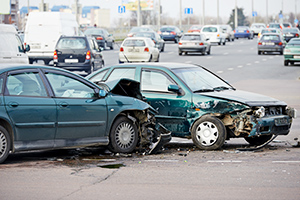
Read and find out if you travel through one of the top crash locations in Massachus
While drivers have a duty to operate with reasonable care and follow traffic laws, it is also worth noting the road you are traveling on. In Massachusetts, certain intersections have a track record of more car accidents than others.
Which intersections? In its most recent report, the Massachusetts Department of Transportation (MassDOT) shared the top 200 crash locations across the state. Released in September 2020, MassDOT’s 2017 Top Crash Locations Report offers insights as drivers plan their summer travel and resume commuting.
The rankings are based on reports to the Registry of Motor Vehicles’ Crash Data System from 2015-2017. A weighted methodology was used to compile the list.
Here are the top 10 car crash locations in Massachusetts:
- VFW Highway at Bridge Street, Lowell
- Randolph Avenue at Chickatwabut Road, Milton
- Morton Street at Harvard Street, Boston
- Ash Street and West Elm Street, Brockton
- Appleton Street at Central Street, Lowell
- Pleasant Street at Lincoln Street, Stoughton
- Main Street at Plainfield Street, Springfield
- High Street at Cabot Street, Holyoke
- Broadway at Third Street, Chelsea
- Saint James Avenue at Saint James Boulevard, Springfield
Several communities had multiple intersections on the list. Lowell has four of the top 25.
Top Crash Locations in Lowell
Two of the highest-ranked intersections were on the VFW Highway along the Merrimack River in Lowell. The VFW Highway at Bridge Street was named the top crash location statewide. The VFW Highway and Mammath Road ranked 22nd.
Also in Lowell, Appleton Street at Central Street and School Street at Branch Street appeared among the top 25 motor vehicle crash areas.
Brockton Top Crash Locations
MassDOT listed 31 Brockton intersections among the top 200 crash locations. The five top crash locations in Brockton:
4) Ash Street and West Elm Street, Brockton
15) Court Street at Montello Street, Brockton
23) Forest Avenue at Bouve Avenue, Brockton
24) Main Street at Nilsson Street, Brockton
25) Warren Avenue at Father Kenney Way, Brockton
One of the top crash locations was the area of North Quincy and Chestnut Streets on the Abington and Brockton border. Nearby, two Randolph intersections along Route 28 appeared on the list. At 41 was the intersection of South Main Street and Union Street. North Main Street and Scanlon Drive ranked 126 (this finished in the same position as six other intersections in Brockton, Lowell, Cambridge and two locations in Worcester).
Can You Change Your Commute to Avoid High Crash Locations?
Every driver wants to avoid a car crash. Apps such as Google Directions and Waze can offer valuable insights about traffic volumes. But we encourage you to look through the full MassDOT list of top crash locations.
If you travel through one of these intersections, consider why there are so many auto accidents. Some roads have high traffic volumes, especially during commuting hours. With more drivers, you may see more unsafe maneuvers, such as talking on a cell phone, speeding or failure to yield. Other roads have become large truck routes or are just aging, with outdated traffic infrastructure or poor lighting.
If you can, try to avoid these intersections or adjust your commute to avoid peak traffic. If you must travel these areas, pay attention and consider safety, near other vehicles as well as other pedestrians and cyclists. And watch for change. If you search online, you may find some of these intersections are scheduled for re-construction in the near future.
Free Legal Consultation – Contact Our Boston Car Accident Lawyers
Breakstone, White & Gluck offers our clients more than 100 years combined experience in handling car accidents, truck crashes and other motor vehicle collisions. Clients turn to us for our experience, expertise and our commitment to achieving the best result in every case. Read about our past results for clients in personal injury cases.
If you have been injured by another driver, learn your legal rights for seeking compensation. For a free legal consultation, contact our car accident attorneys at 800-379-1244 or 617-723-7676 or use our contact form.
Massachusetts Cyclists May Finally Get Three Feet for Safety
 Cyclists may get a little more room for safety if lawmakers pass the road safety legislation Gov. Charlie Baker proposed this week.
Cyclists may get a little more room for safety if lawmakers pass the road safety legislation Gov. Charlie Baker proposed this week.
On Monday, the Baker-Polito administration filed an expansive road safety package, which among other changes, calls for a new primary seat belt law and a controversial measure allowing cities and towns to install red-light cameras.
One proposal – to be called Haley’s Law – seeks much steeper penalties for drivers who operate with a suspended license. Currently, drivers may face fines and/or up to 10 days in jail for the first offense in Massachusetts per M.G.L. c. 90, § 23.
With the new legislation, a driver who lets their license lapse, then drives could face up to $1,000 in fines and 5 years in prison for the first offense. Drivers who cause auto crashes resulting in serious injury could face up to 2 ½ years in a House of Correction. There would be a mandatory two-year sentence, and up to 10 years imprisonment, for drivers convicted in fatal crashes.
The legislation is called, “An Act Relative to Improving Safety on the Roads in the Commonwealth,” and was filed as Massachusetts re-opens after COVID-19. The pandemic changed everything on our roads. But despite lighter traffic, our roads were not safer last year.
According to state figures, Massachusetts saw 334 traffic fatalities during 2020, compared to 336 in 2019.
Safety Reforms for Massachusetts Cyclists
For cyclists, there are two significant proposals: a 3-foot safe passing distance and a truck sideguard mandate for all state-owned and operated trucks.
3-Foot Safe Passing Distance
When traveling near cyclists, the legislation would require drivers to maintain a three-foot safe passing distance and a safe and proper speed. Drivers would have the same responsibility near cyclists traveling without a protective barrier, such as a protected bike lane with flex posts. 36 other states have safe passing laws, according to the Baker-Polito administration. The proposed legislation would give both drivers and future road projects more direction on how to accommodate cyclists. Massachusetts lawmakers have not acted on similar legislation in previous sessions.
Most drivers know they must stay at least three feet away as a precaution to avoid bicycle crashes. But currently, Massachusetts traffic laws only recognize that drivers must pass cyclists at a “safe distance.” There is no consistent message on how much room to give cyclists.
Massachusetts traffic laws currently state in, “approaching or passing a person on a bicycle the operator of a motor vehicle shall slow down and pass at a safe distance and at a reasonable and proper speed.” M.G.L. c. 90 § 14. Drivers must “wait for a safe opportunity to overtake” a bicyclist or other vehicle, per M.G.L. c. 89 § 2.
Stronger Truck Safety Equipment Requirements
The Baker-Polito administration is calling for state-owned and operated trucks to utilize safety equipment such as sideguards, convex mirrors and cross-over mirrors. All these state vehicles weighing over 10,000 pounds would have to comply by Jan. 1, 2024.
The goal is to reduce the risk of injury and death to pedestrians and cyclists, the most likely victims in truck crashes, according to the Volpe National Transportation Center.
In Boston, we have seen numerous cyclists killed when truck drivers and companies are neglect to look. In 2014, the Boston City Council took strong action, passing the first-in-the-nation truck sideguard ordinance. All city-owned and city-contracted trucks must now be equipped with sideguards, convex mirrors, crossover mirrors and blind-spot awareness decals.
Today, as you drive through Boston, you will see large trucks with sideguards. But Boston – and Somerville and Cambridge have similar regulations – can only influence safety within the city. This is why many – including Breakstone, White & Gluck – support passing statewide legislation requiring sideguards protect cyclists and pedestrians from being swept under trucks. While this proposal would only impact state-owned and operated trucks, this could protect many cyclists and potentially encourage private industry.
Support Truck Sideguards in Massachusetts
MassBike is advocating for the passage of “An Act Relative to Improving Safety on the Roads in the Commonwealth,” which will protect cyclists on Massachusetts roads. If you support the organization’s work, visit the MassBike website and learn how to contact your local legislators and voice your support.


